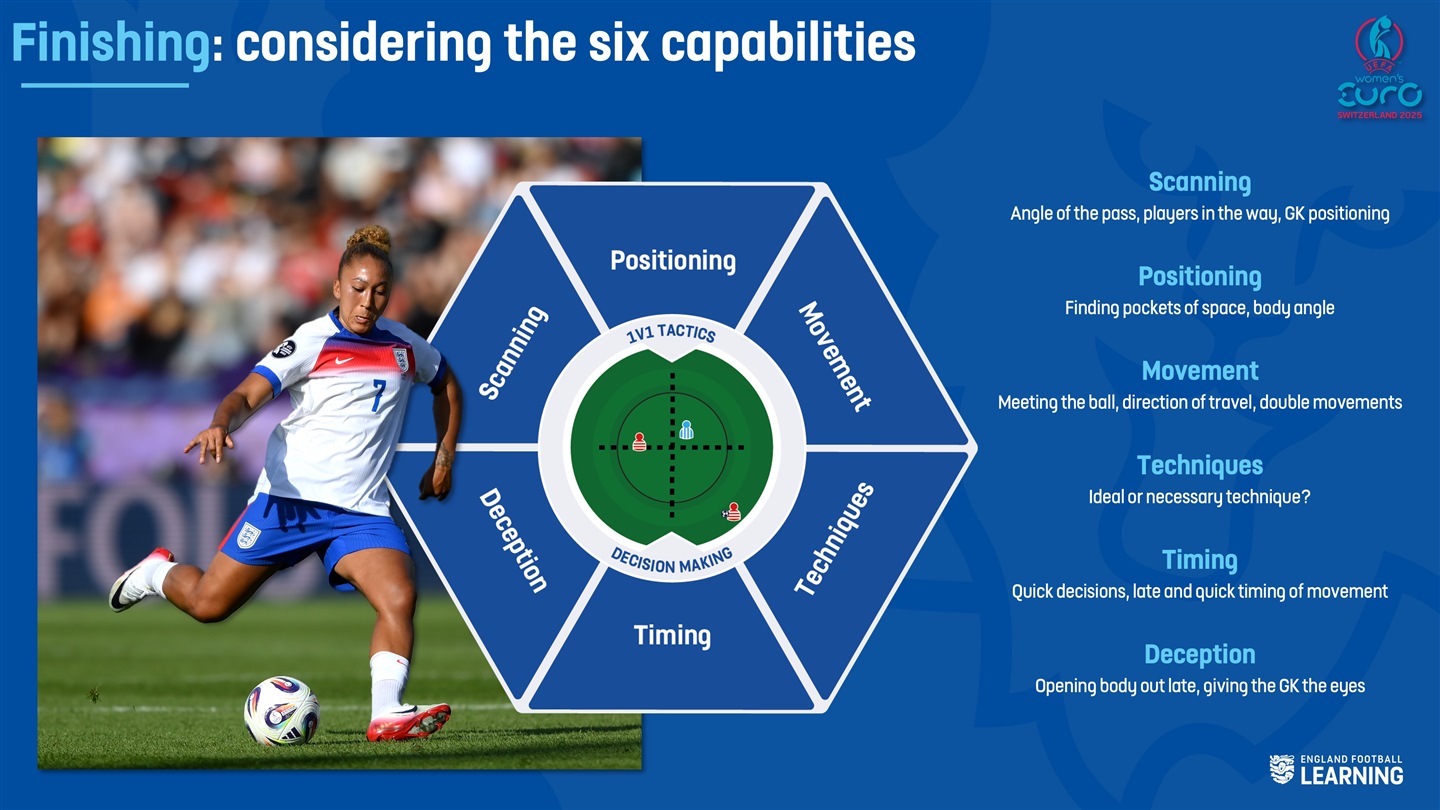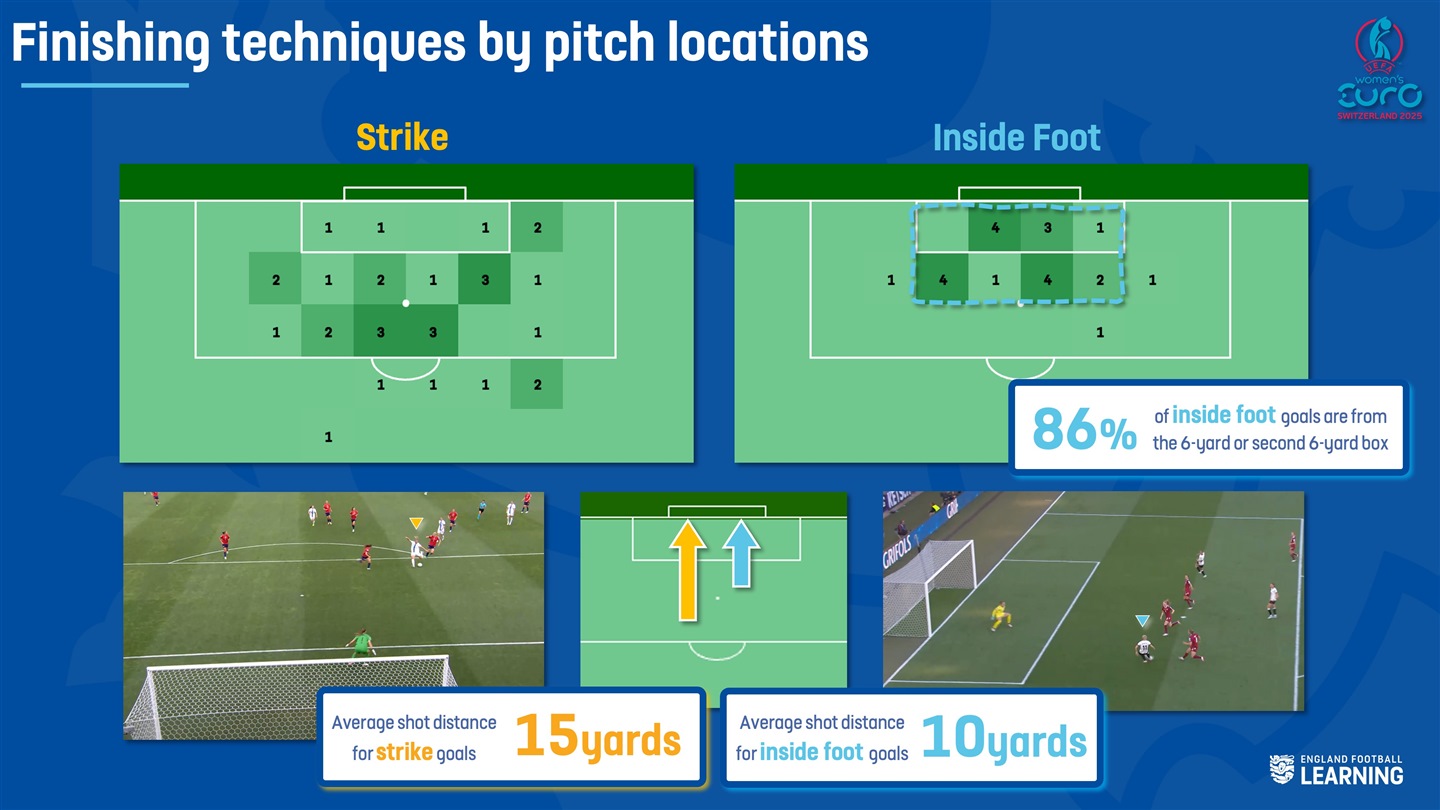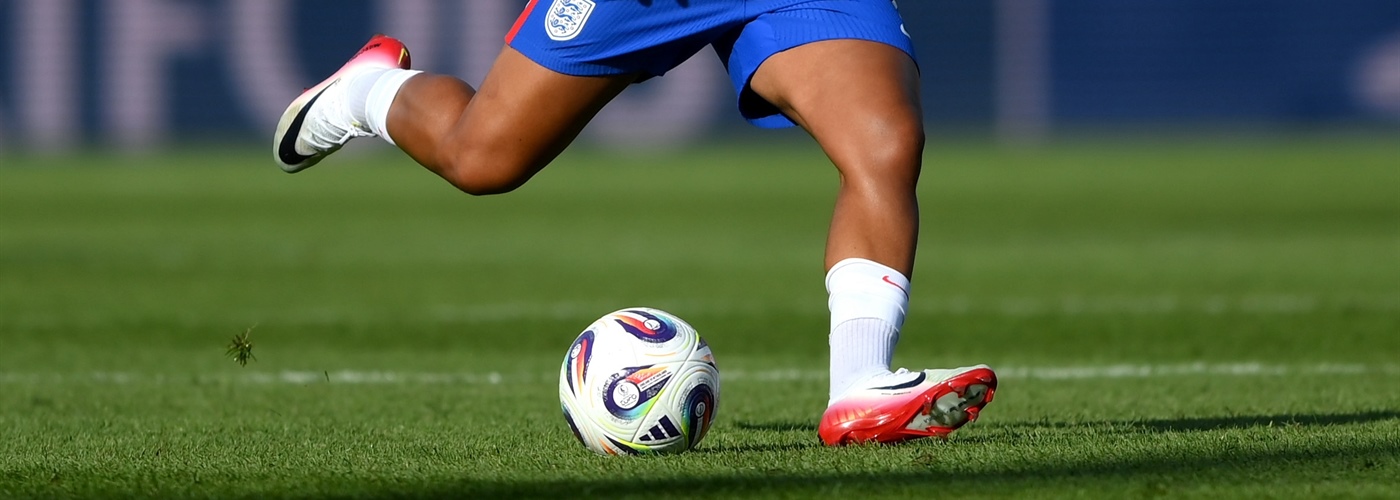From pinpoint volleys into the top corner to chaotic goalmouth scrambles, one thing is for sure – goals win games. But how they’re scored tells a more compelling story. After an entertaining tournament, Game Insights analyst James Cook delves into the data behind goalscoring and how it can help shape practice design.
When focusing on coaching goalscoring and crafting practices for this, a great place to start would be to observe how goals are scored at the top level. While the finishing technique is important, there are many other factors to consider. Finish locations, the number of touches taken, and the distance from goal are worthwhile analysing too.
In the women’s euros this summer, there was a record-breaking 106 goals scored, for this blog we’ve analysed the 78 open play goals.
Finish Technique
Smash it or place it – which is a better technique?
Or perhaps a better question would be, why should each technique be used? A ‘strike’ technique is where the player makes contact with the ball with the top of their boot (their laces) to generate more power. An ‘inside foot’ technique is where the player passes the ball into the net by making contact with the inside of their foot – allowing for more precise shots. Together, these two techniques make up 70% of open play goals.

Finish locations
Of the 78 open play goals, 88% were from shots taken inside the 18-yard box. Let’s look at the key areas inside the box of where goals are scored from.

Interestingly, these two key zones show data which is consistent with the goals scored in the WSL 24/25 season. 51% of WSL goals were from inside the 18-yard box and between the posts, and 59% of WSL goals were scored from the 6-yard and second 6-yard box.
Consider where your players take their shots from in games. Are they likely to score from the positions they are shooting from? How does your practice design enable for repetition, realism & relevance for goalscoring?
Number of touches taken

The goalscoring data from the tournament reveals a clear trend - 1st time finishes were the most common, with a sharp drop of nearly 50% for two-touch finishes. When we separate the group stage and knockout stages of the competition, the trend becomes clearer. There is an increase in 1st time finishes as the competition progresses.
What could cause this? And what does that mean for our players?
It could be due to playing against better teams and better defenders in the latter stages of competitions. Players may not have the luxury of time to take a touch before shooting as better defenders will get pressure on the ball quicker. Players need to be ready to prepare their shot before the ball comes to them, using the six capabilities effectively so they can take the shot first time.

Read another blog on some of the Euros Superstars and how they use the six capabilities in goalscoring.
Combining Techniques with touches and location insights
Now we’ve analysed trends on technique, location, and touches taken. We can delve into more detail by combining these goalscoring factors against each other. Have a look at the two visuals below, what are the trends you notice now?


There are some clear differences between ‘strike’ and ‘inside foot’ finishing techniques. How does this extra layer of detail change what we originally thought? Not only do we now know why players might use each technique, but also where, and how many touches they are likely to take before a shot.
The graphic above shows the importance of spotting the details when observing players finishing. ‘Strike’ techniques happen in different areas of the pitch to ‘inside foot’ techniques, because the best players know which weapons to use in different situations.
What does this mean for coaching and practice design?
How can we support players to recognise points of reference in relation to their pitch location when shooting?
How can we design game-realistic practices to support our players’ decision making for technique selection in shooting opportunities?
How can we design practices that will allow our players to practice a variety of finishing techniques from game-realistic goalscoring distances?



-

Matthew Oladayo Ajiboye
-
Cancel
-
Vote Up
0
Vote Down
-
-
Sign in to reply
-
More
-
Cancel
Comment-

Matthew Oladayo Ajiboye
-
Cancel
-
Vote Up
0
Vote Down
-
-
Sign in to reply
-
More
-
Cancel
Children